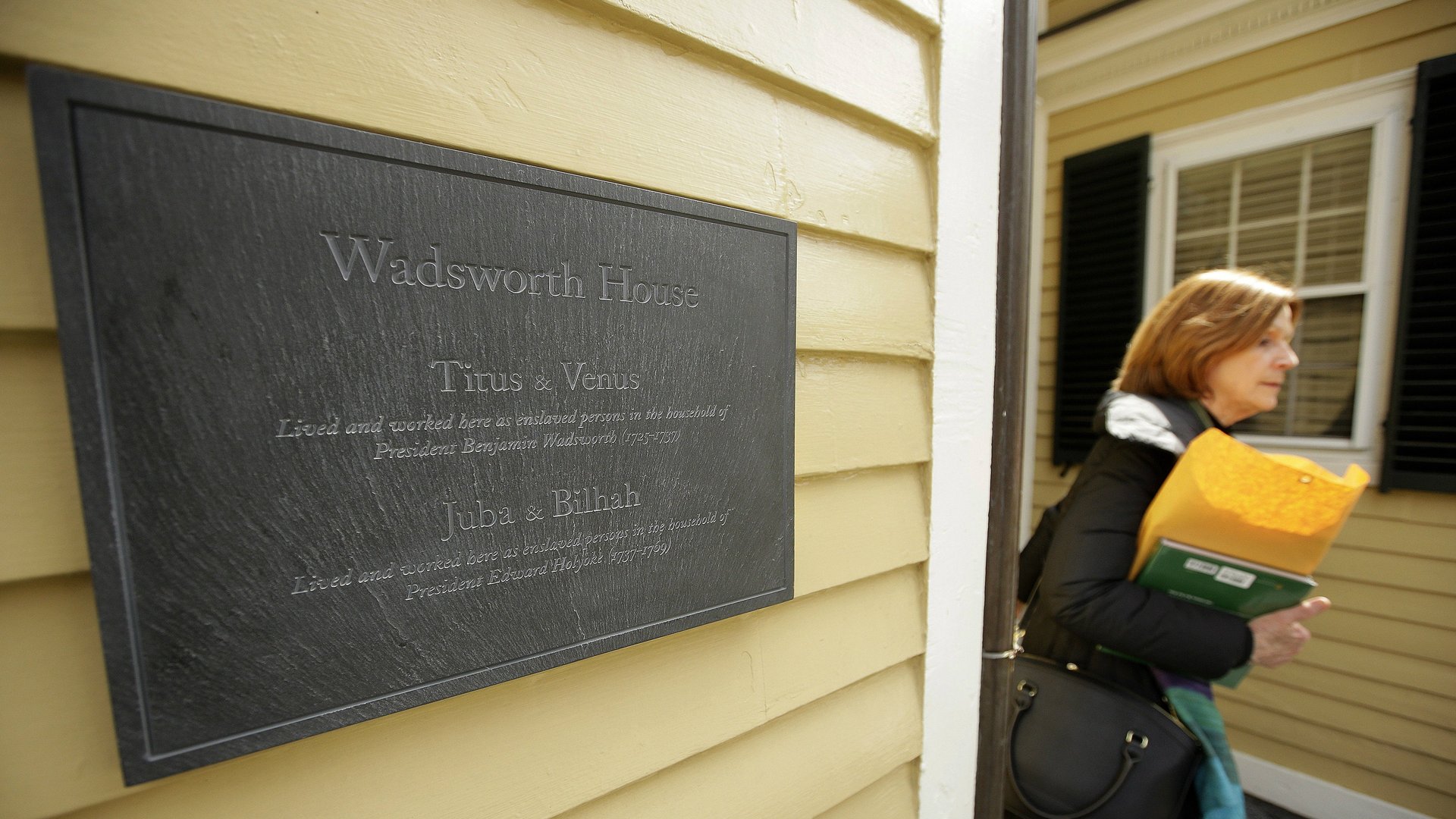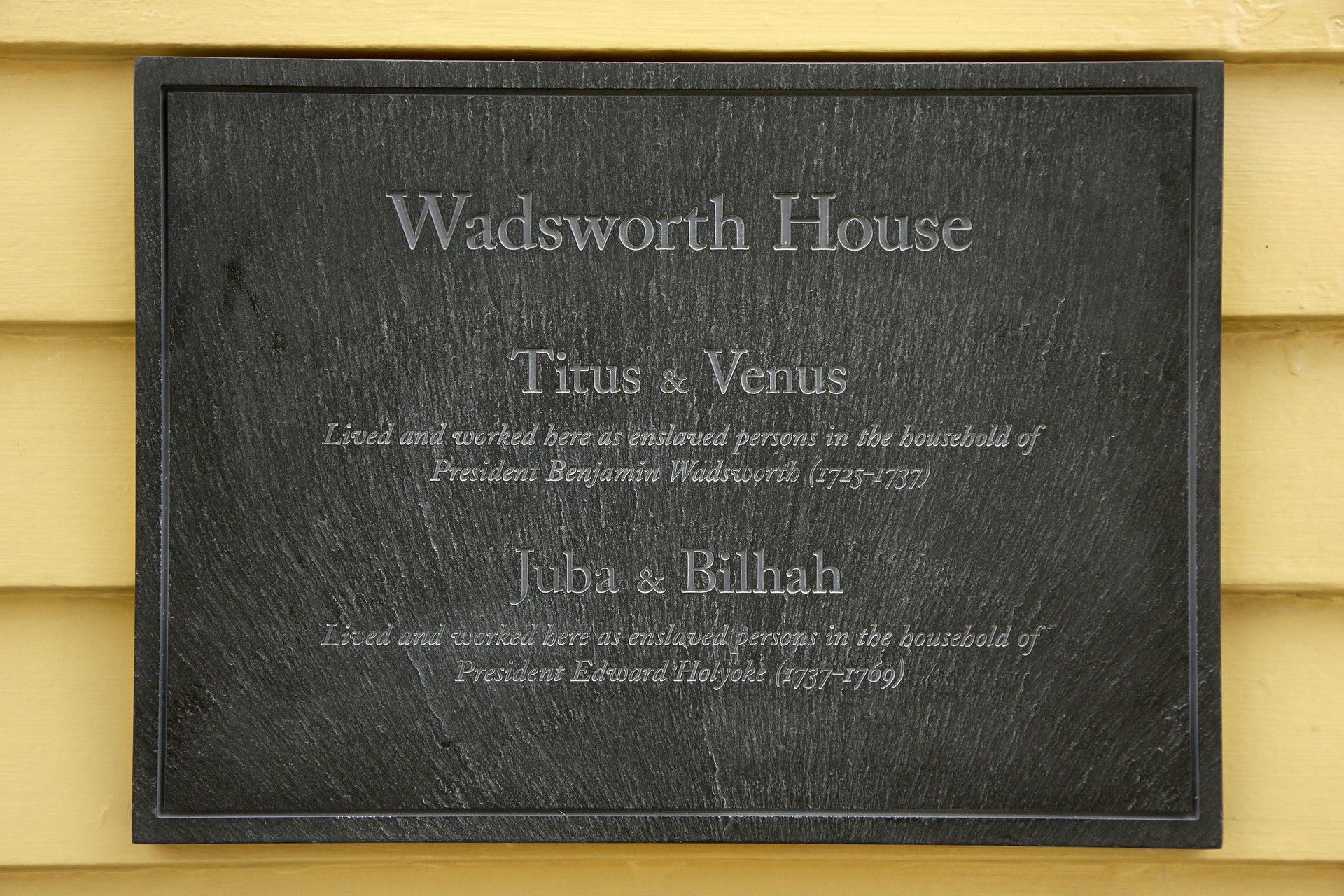A new plaque at Harvard sets its history of slavery in stone
“Titus, Venus, Bilhah, and Juba lived there, too.”


“Titus, Venus, Bilhah, and Juba lived there, too.”
A new plaque at Harvard University commemorates the names of four slaves who were owned by two of its past presidents, Benjamin Wadsworth and Edward Holyoke in the 1700s. Installed at the Wadsworth House, the marker also puts in stone the university’s new commitment to openly tackle this painful dimension of its history.
“The plaque is intended to remember them and honor them, and to remind us that slavery was not an abstraction but a cruelty inflicted on particular humans,” said Harvard president Drew Faust during the ceremonial unveiling on April 6.

Faust, a renowned civil war historian, explained that gesture signifies the university’s effort to reverse its 400-year policy of quietly expunging evidence of its participation in and profiteering from the slave trade. “The past never dies or disappears. It continues to shape us in ways we should not try to erase or ignore,” she said to the crowd that included civil rights leader and congressman John Lewis.
Like many universities across the US, Harvard has been reflecting on how to deal with vestiges of slavery in its campus. Last December, Harvard school administrators voted to change faculty titles from ”master” to the more neutral “faculty dean.” A student-led campaign led its law school to abandon its 80-year old shield whose design is based on the family coat of arms of Isaac Royall Jr, a Harvard donor and slaveowner.